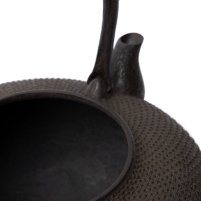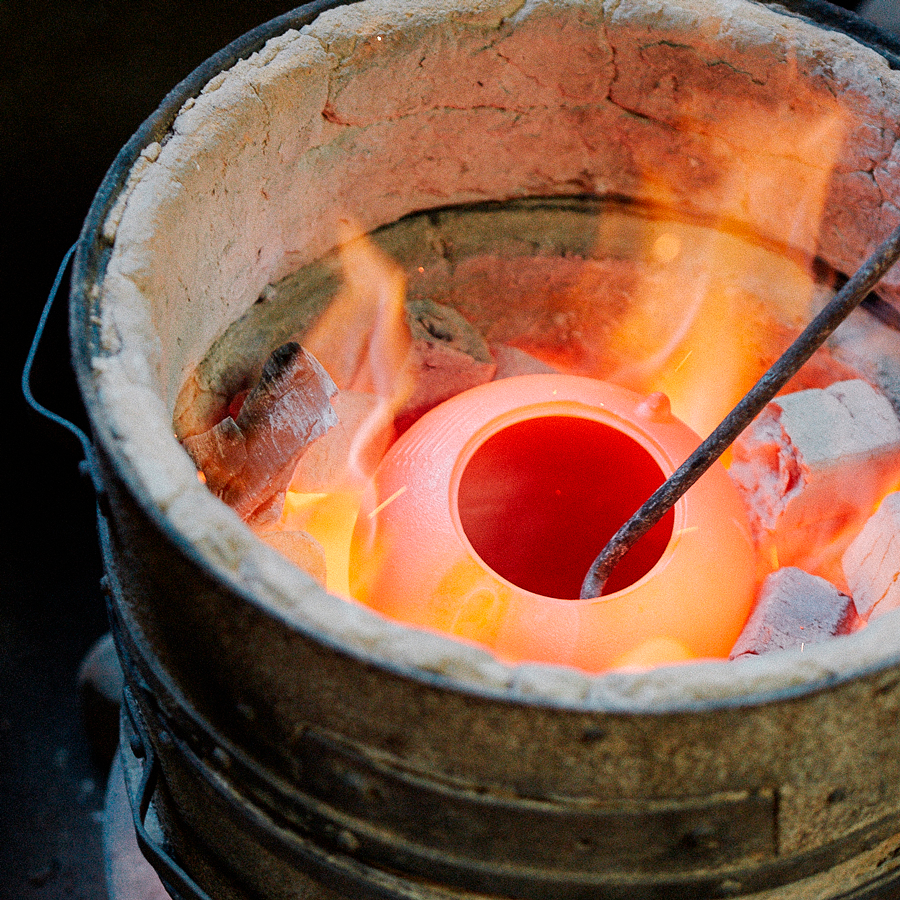Manufacture
This Tetsubin is cast in a sand mould that is elaborately decorated with stamped or freehand motifs before it is fired in charcoal at 800°C to 1000°C to form a solid mould into which 1500°C molten iron can then be poured. Once the iron has cooled a little, the Tetsubin is removed from the mould and is checked for even thickness by tapping with a hammer. To prevent rust from developing, the Tetsubin is covered with lacquer and baked in charcoal again, this time at 900°C, to create an oxide film inside the kettle in a process known as Kamayaki (釜焼き "iron pot firing") which is unique to Nanbu Tekki cast ironwares. In the final step, the Tetsubin is coated in Ohaguro (おはぐろ): a rust-preventing liquid made by putting pieces of steel in acetic acid and brewed tea, which also adds colour to the surface.





















